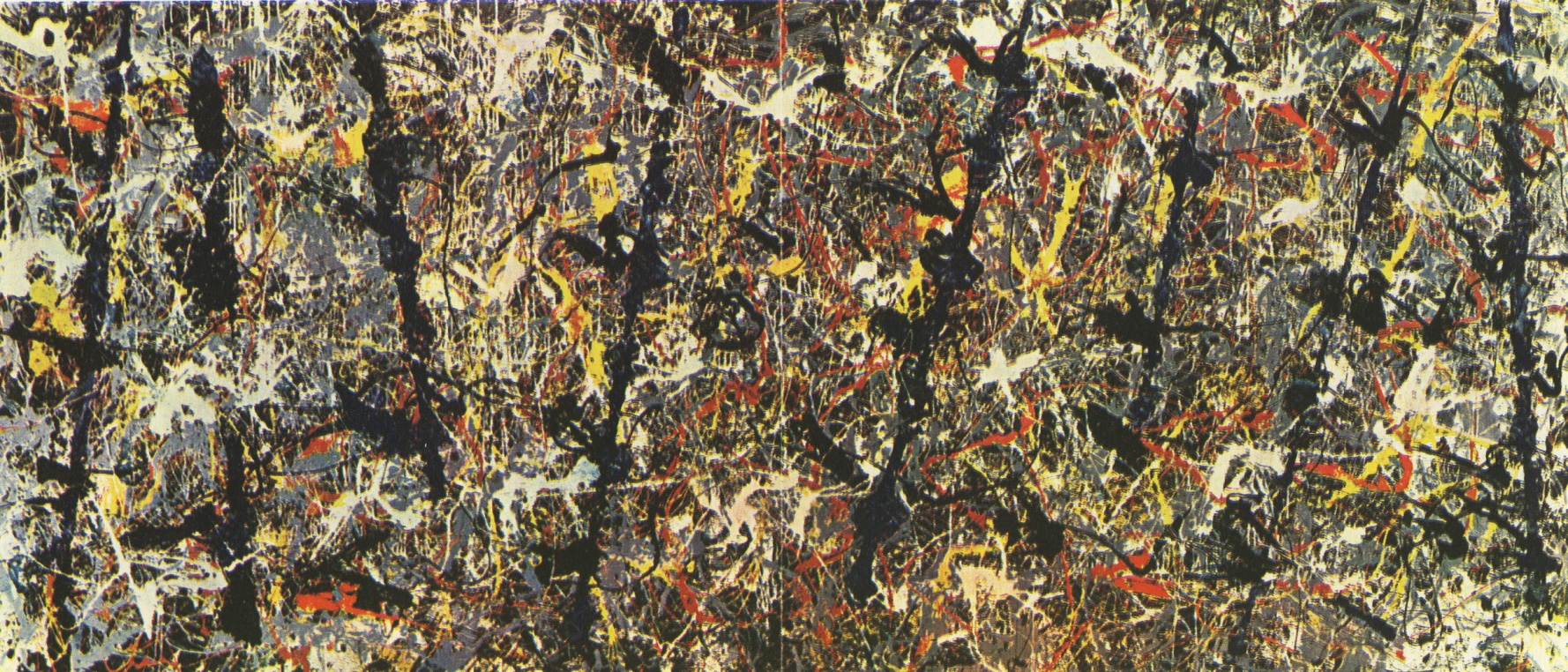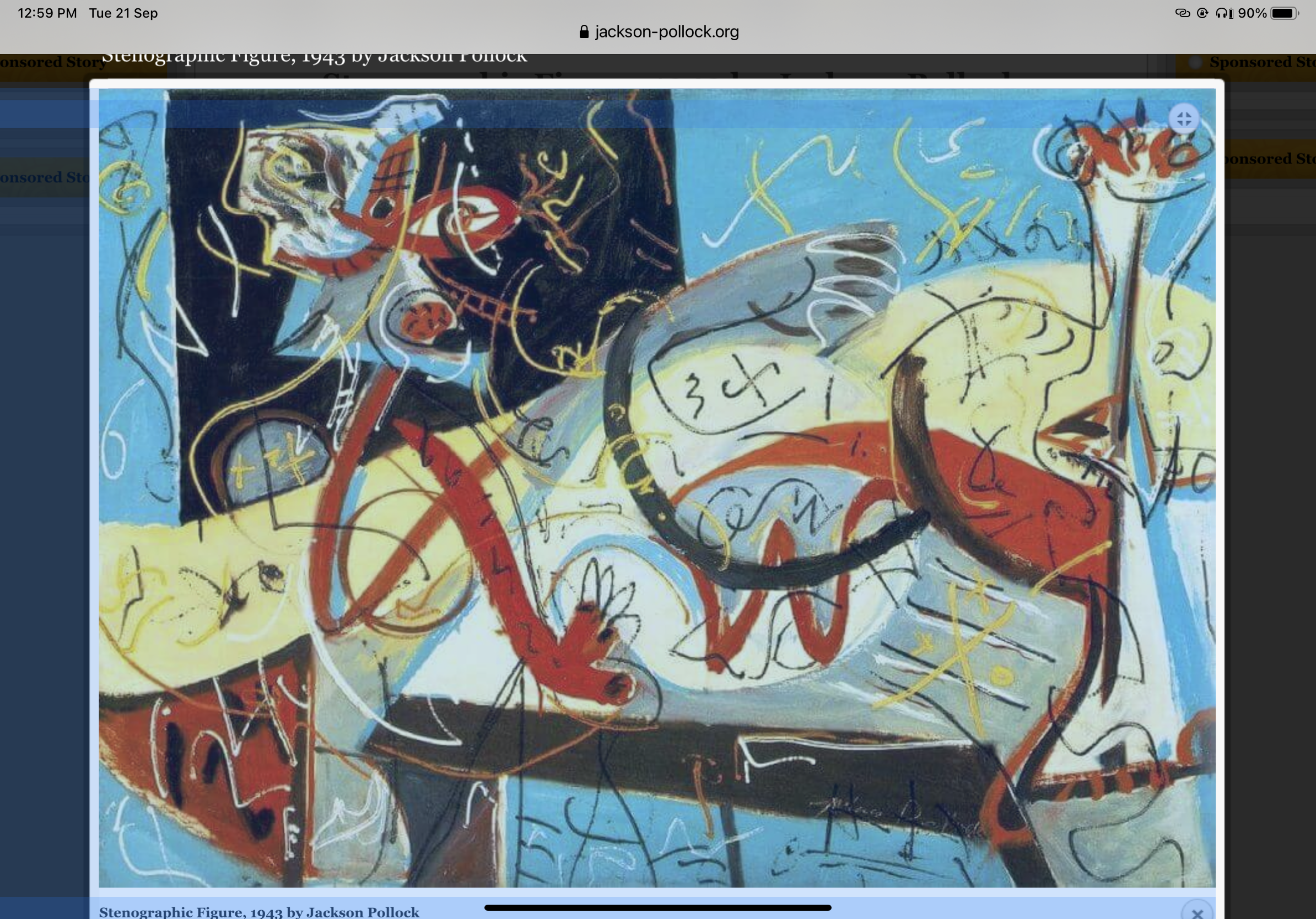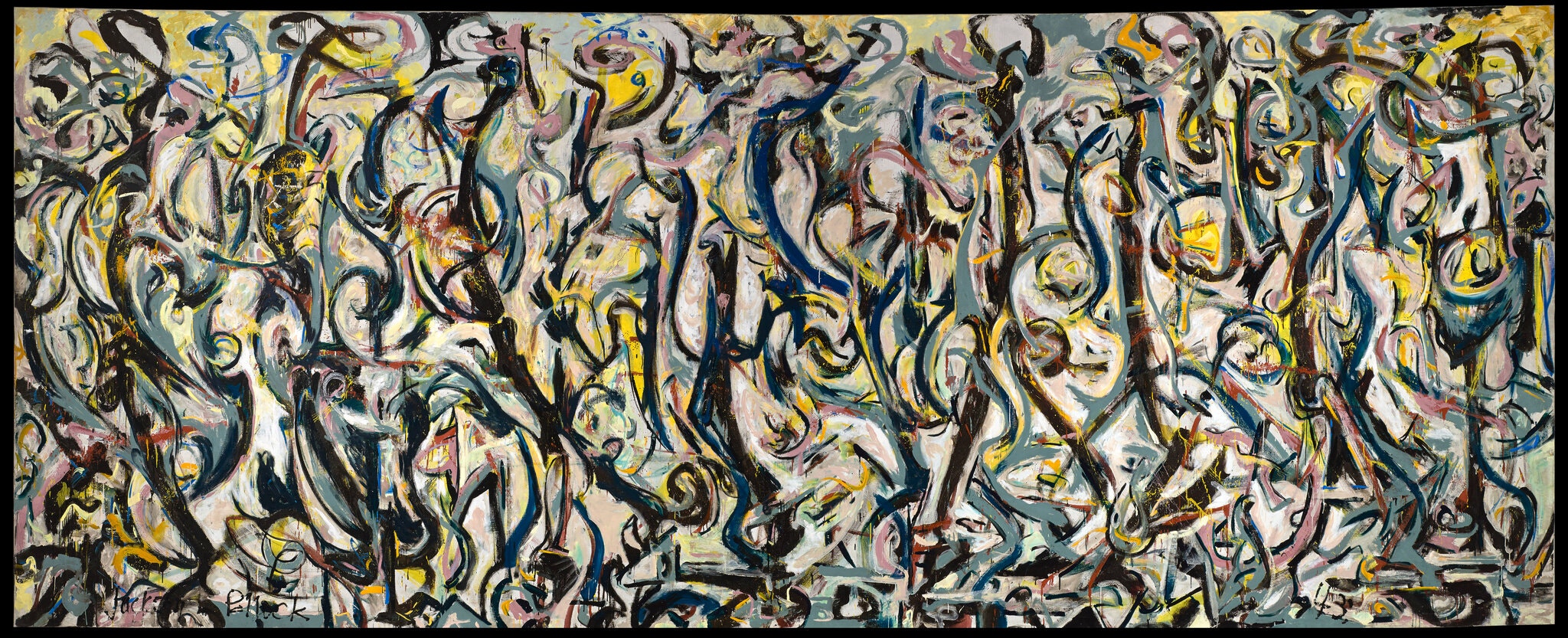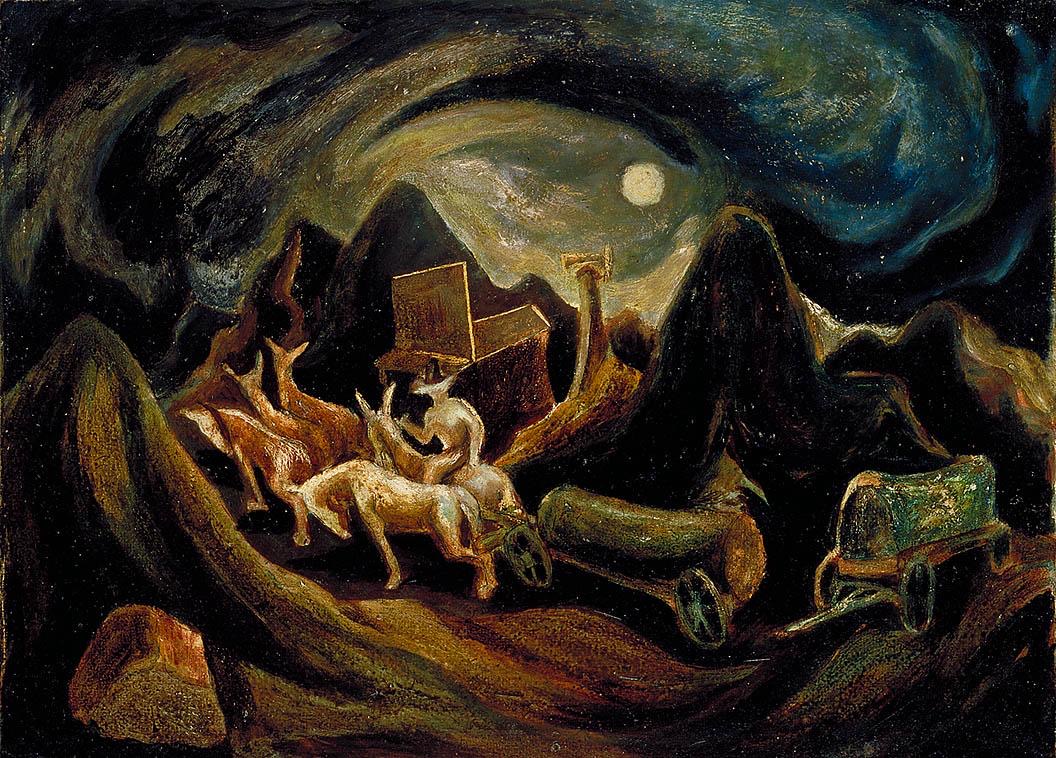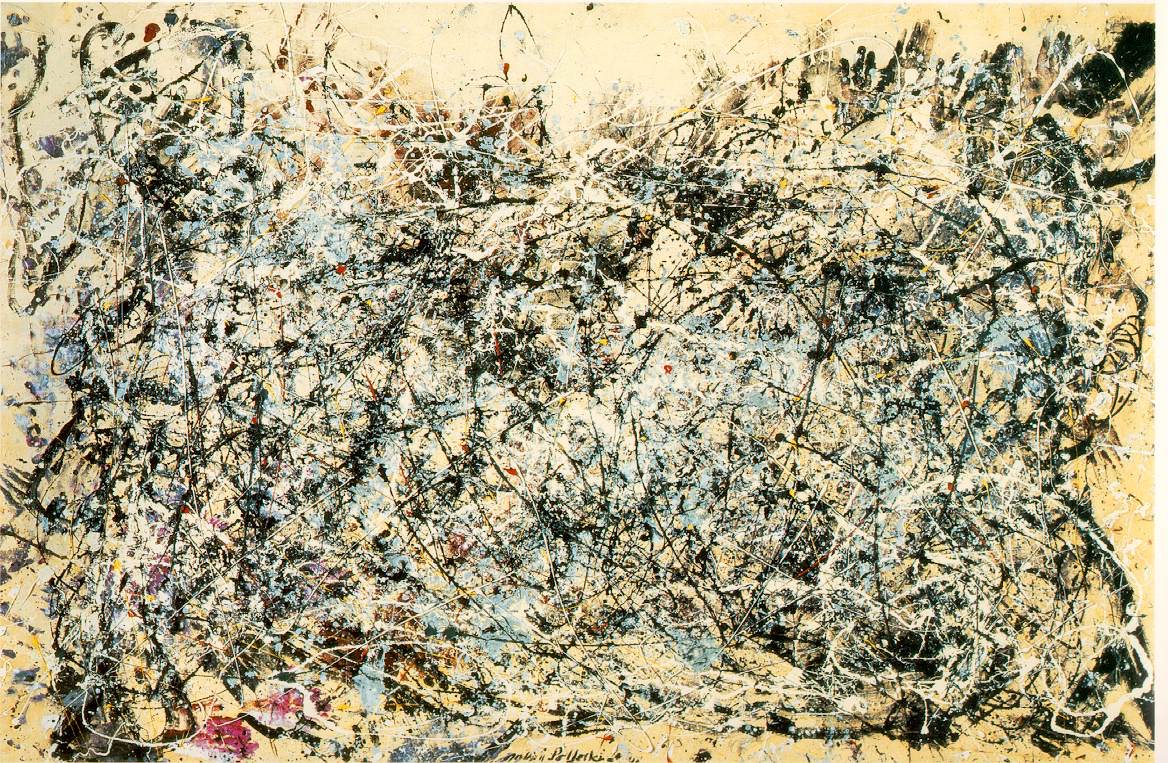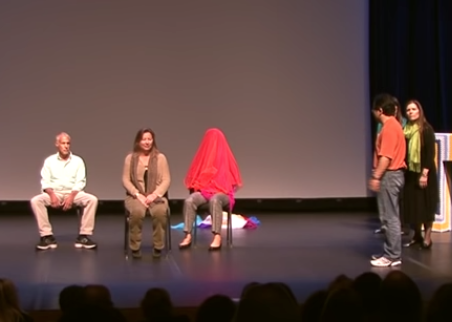I am interested in the absract expressionists. Particularly the art of Jackson Pollock. Lee Krasner, his wife as well, they are an amazing tragic pair. I am making this post to collate some posts I’ve made related to him and to have a place to add reflections and links. Here is a link to Wikipedia about the Blue Poles – the feature image above (a detail below). Jackson Pollock in Wikipedia.
From Wikipedia, the free encyclopedia
Paul Jackson Pollock (January 28, 1912 – August 11, 1956) was an American painter and a major figure in the abstract expressionist movement. He was widely noticed for his “drip technique” of pouring or splashing liquid household paint onto a horizontal surface, enabling him to view and paint his canvases from all angles. It was also called all-over painting and action painting, since he covered the entire canvas and used the force of his whole body to paint, often in a frenetic dancing style. This extreme form of abstraction divided the critics: some praised the immediacy of the creation, while others derided the random effects. In 2016, Pollock’s painting titled Number 17A was reported to have fetched US$200 million in a private purchase.
*
https://www.jackson-pollock.org/
This site has the background & the paintings.
Copied one from 42
✳
Movie
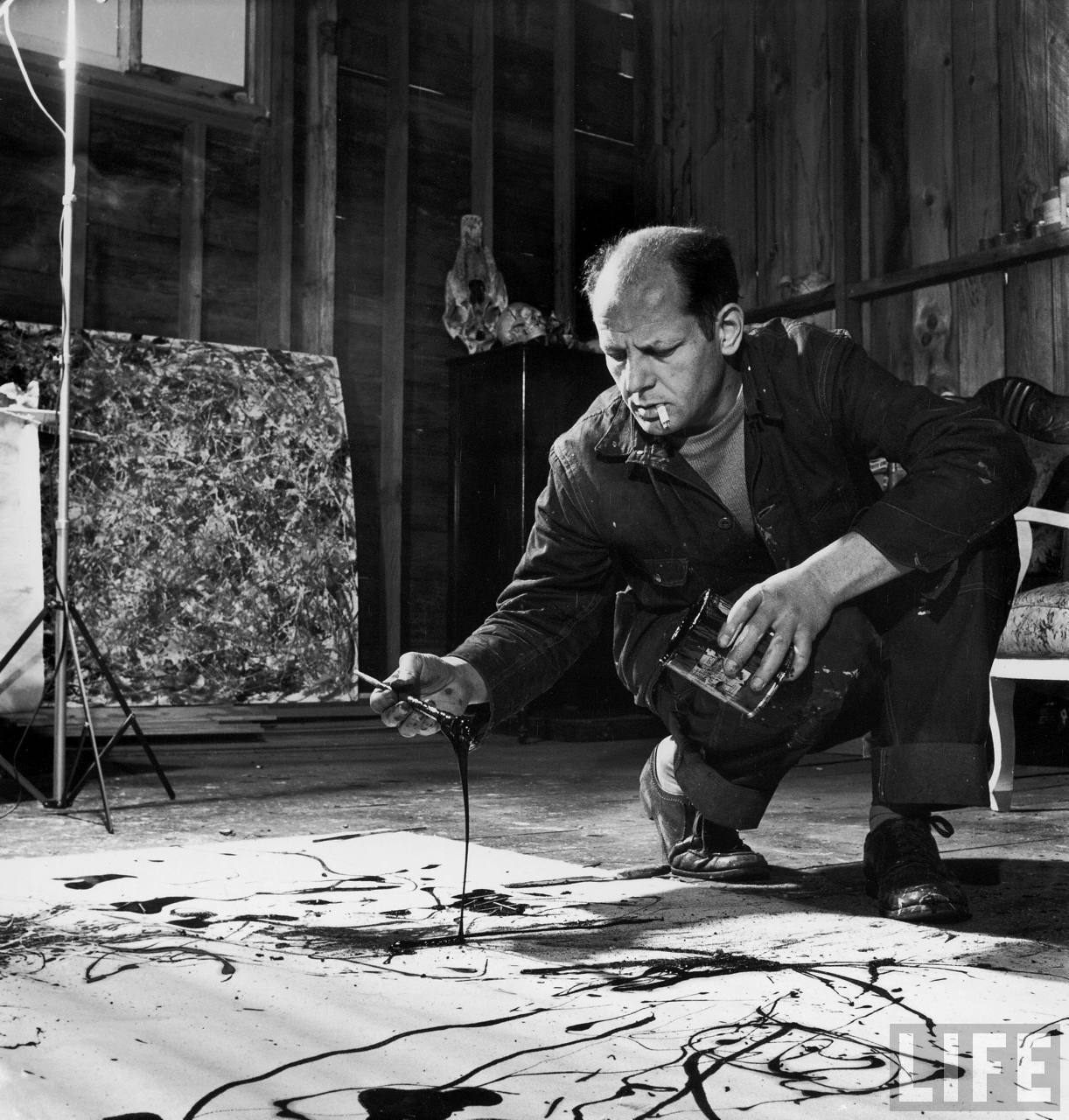
more from the Auckland Gallery:
Have you ever heard Jackson Pollock’s voice or seen him painting?
Hans Namuth and Paul Falkenberg made their film Jackson Pollock in 1951. When Namuth arrived at the artist’s studio he recalled that ‘A dripping wet canvas covered the entire floor. Blinding shafts of sunlight hit the wet canvas, making its surface hard to see. There was complete silence… Pollock looked at the painting. Then unexpectedly, he picked up can and paintbrush and started to move around the canvas. It was as if he suddenly realized the painting was not finished. His movements, slow at first, gradually became faster and more dancelike as he flung black, white and rust-colored paint onto the canvas… He completely forgot that Lee [Krasner] and I were there; he did not seem to hear the click of the camera shutter… My photography session lasted as long as he kept painting, perhaps half an hour. In all that time, Pollock did not stop. How could one keep up this level of activity? Finally, he said “This is it”.’
Here is a short excerpt from Namuth’s and Falkenberg’s fine film (dead link, but here is the whole BBC doco) where Pollock says ‘I want to express my feelings rather than illustrate them. Technique is just a means at arriving at a statement.’
❋
Progressive or reactionary?
And perhaps here we have come to something like an answer to my original question. If a talented artist cannot see or think beyond the decadence of the culture to which he belongs, if the situation is as extreme as ours, his talent will only reveal negatively but unusually vividly the nature and extent of that decadence. His talent will reveal, in other words, how it itself has been wasted.
Berger, John (2014-09-07T22:58:59). Selected Essays of John Berger. Bloomsbury Publishing. Kindle Edition.
WL:
Berger credits Pollock with talent, but criticises him for not commenting on the decadence. Meditate on this: Pollock, is not commenting on anything, because he is too busy being who he is. He is… expressing. In that sense he might be the forerunner of a me generation, but forerunner is the wrong word, it’s been a me generation for centuries. There are other contradictions at play. This is the weird thing about abstract expressionism, which is not socialist, and even individualist, but at the same time something that emerged out of a culture that was counter to the decadence. To ‘do’ is different than to ‘illustrate’. And that is progressive. Pollock, in his very hurtfulness was also a victim as an outsider of a culture that violated his being. That is easy to overlook as that very society drops bombs on Hiroshima and Nagasaki. I can see him as making art while emprisoned. If that is true then it is true of Lee Krassner even more so.
Pollock Confidential
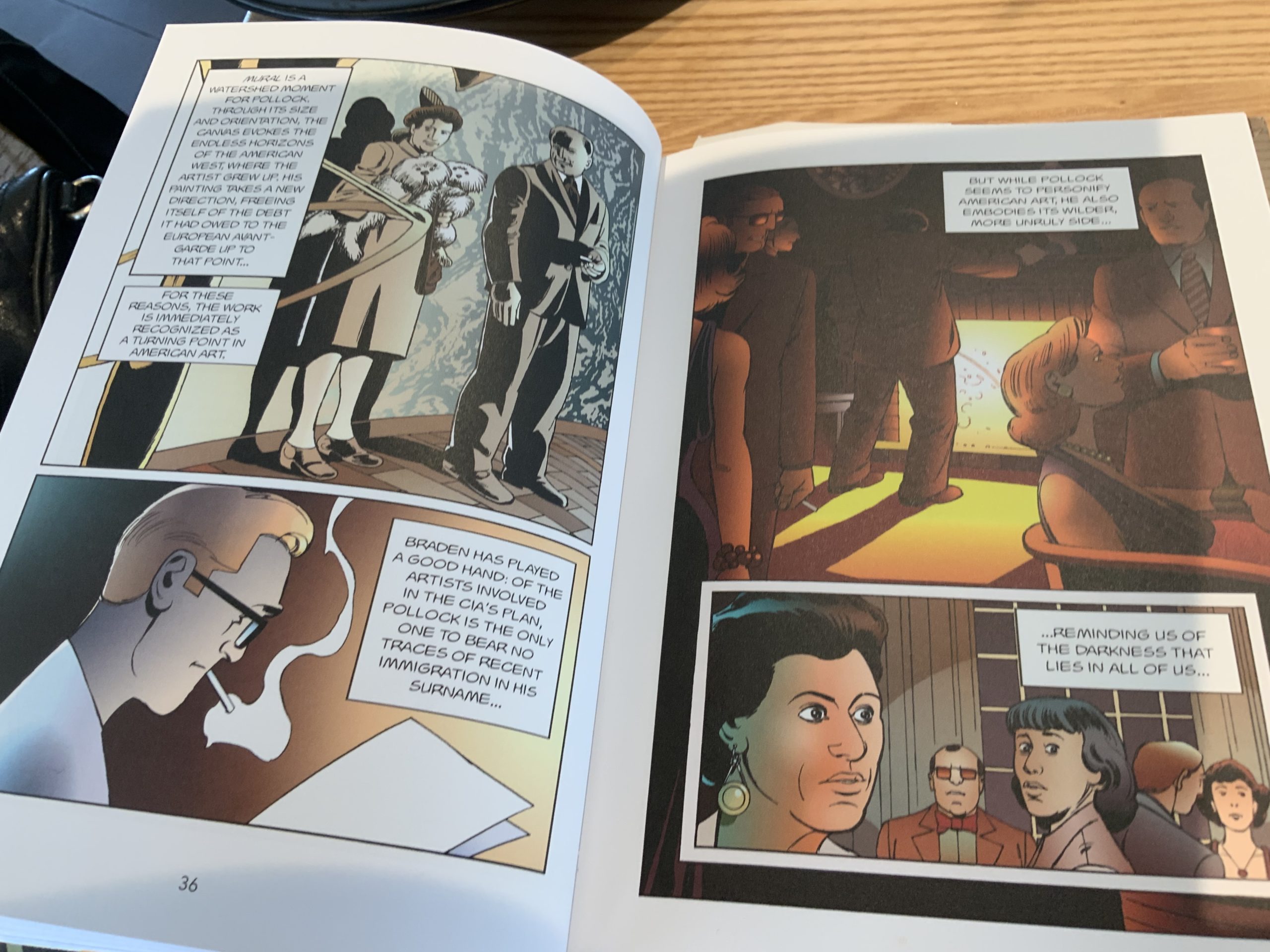
❋
Engaging the Muse ANZPA_Journal_17_art07
❋
More Pollock
https://en.m.wikipedia.org/wiki/Mural_(1943)
Going West 1934 – 35
Number 1A, 1948

